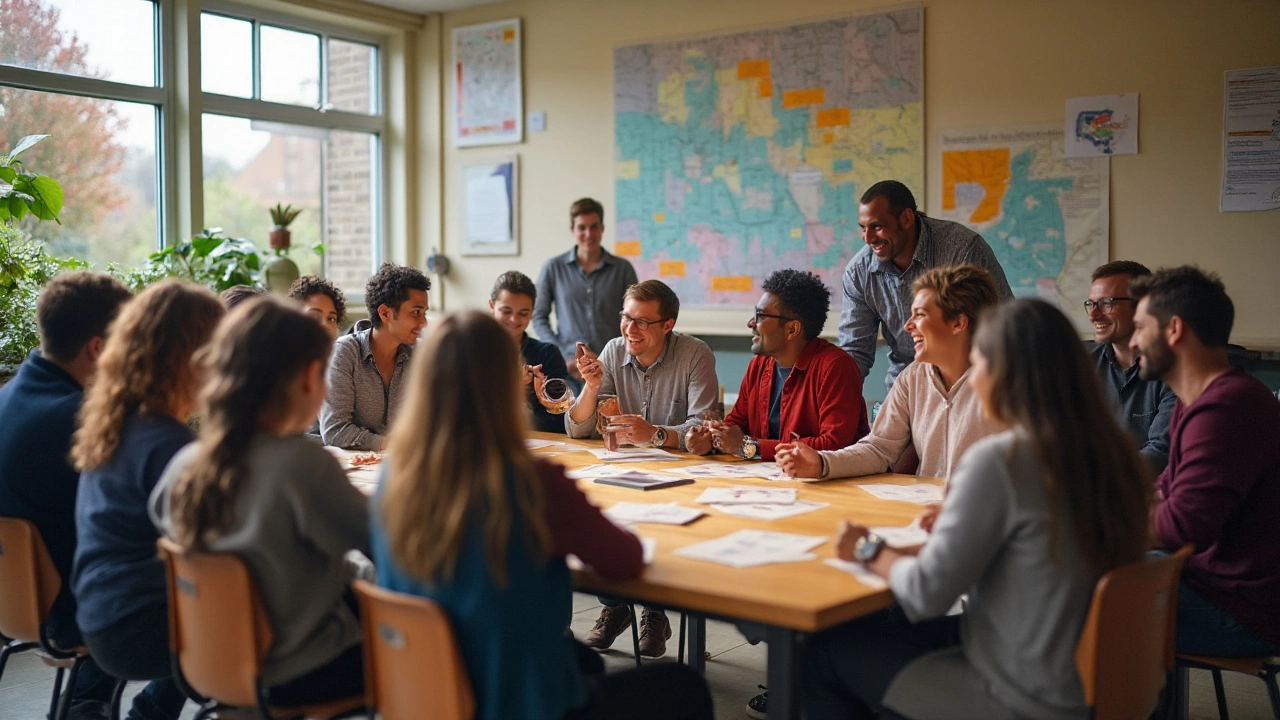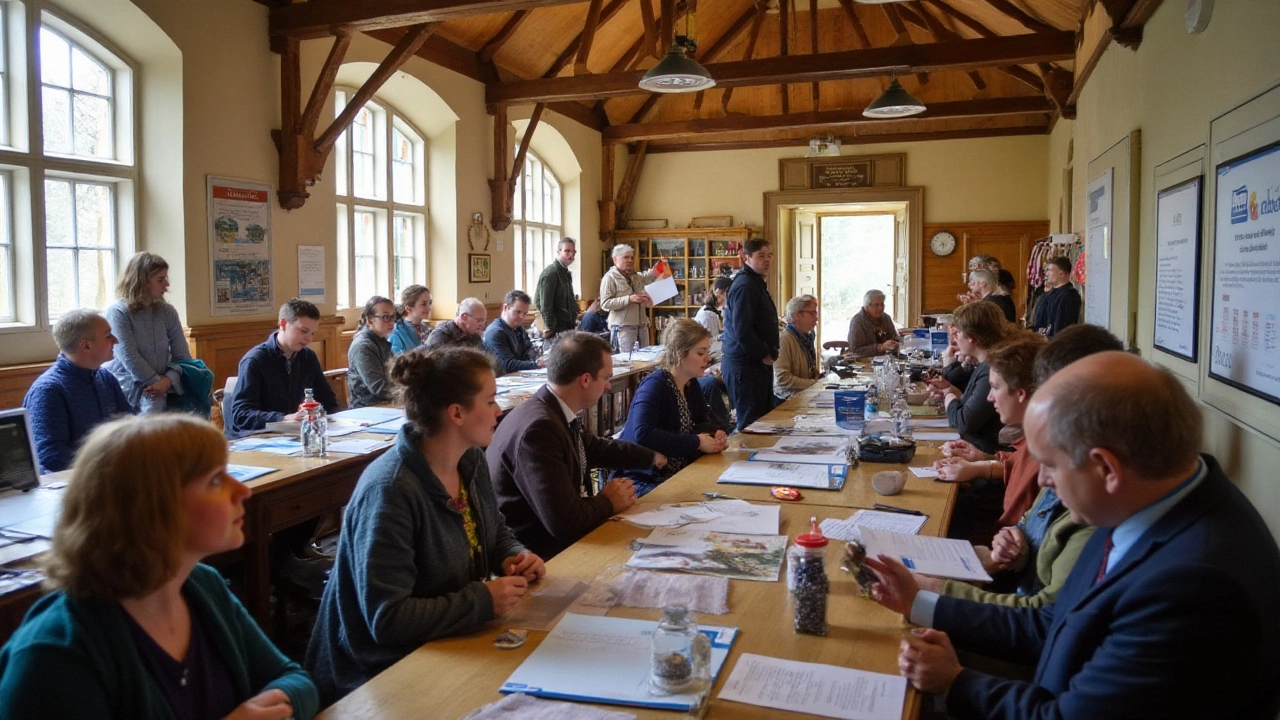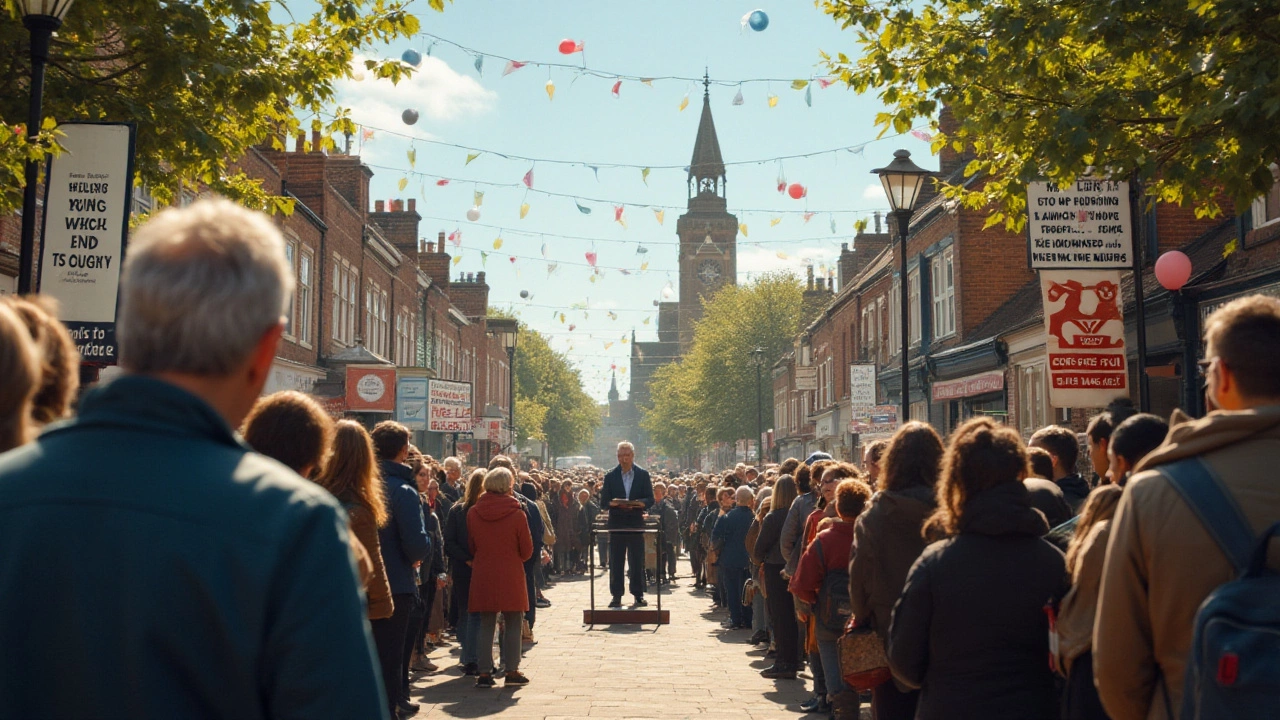Crafting a Successful Community Outreach Plan
 Dec, 31 2024
Dec, 31 2024
In the heart of every thriving community lies the pulse of connection and collaboration. Crafting a community outreach plan is an art that requires a delicate balance of strategy, empathy, and creativity. At its core, this endeavor is about reaching out, forging connections, and making a lasting impact.
Whether you're a non-profit organization, a local business, or an enthusiastic individual, understanding how to effectively engage with your community is vital. But what does a successful outreach plan include? And where should you begin?
In this exploration, we'll delve into the foundational elements of community outreach planning. We'll look at how to identify your audience, set goals, employ the right methods, and create partnerships that amplify your impact. Join us on this journey to discover how you can transform your intentions into inspiring actions that echo through the community you serve.
- Understanding Your Audience
- Setting Clear Objectives
- Choosing the Right Methods of Engagement
- Building Partnerships and Collaborations
- Evaluating and Adapting Your Plan
Understanding Your Audience
To launch a community outreach initiative that truly resonates, understanding your audience is paramount. It's the bedrock upon which every other aspect of your outreach plan is built. One critical aspect of this is knowing the demographic makeup of your target group. This includes age, gender, occupation, cultural background, and interests. By gaining insights into these aspects, you can tailor your messaging and engagement strategies to connect more deeply with them. Additionally, learning about your audience's needs and challenges is vital. Ask questions, conduct surveys, and hold open forums to gather direct feedback, as this can illuminate the problems they may face and how your outreach can provide solutions.
When designing an outreach strategy, consider how engaged different segments of your community currently are. Are they active participants, or is there noticeable apathy? Finding this out can help you to bridge the engagement gap. A study by the National Council of Nonprofits found that personalized outreach efforts increase participation by over 30%, underscoring the importance of tailoring your approach. Moreover, cultural sensitivity and inclusivity should guide your efforts. Respect for cultural differences fosters trust and helps you avoid misunderstandings that can derail your outreach initiatives. Engaging cultural liaisons or local leaders can also prove beneficial in navigating any complexities.
"People don’t care how much you know until they know how much you care." – Theodore Roosevelt
Beyond demographics and interests, understanding communication preferences is crucial. Different segments of your audience might prefer different communication channels. While older generations might lean towards radio, newspapers, or face-to-face meetings, younger members may favor social media or virtual meet-ups. According to a Pew Research Center survey, nearly 70% of adults in the U.S. use Facebook, whereas platforms like TikTok and Snapchat see higher usage among teens and young adults. Tailoring your message to fit these preferences can significantly enhance outreach success. Crafting messages that are concise, clear, and compelling will hold the key to effective engagement.
Lastly, don't forget to analyze previous engagements. What worked well in the past? What didn’t? By studying previous outcomes, successes, and failures, you can refine your strategies and avoid repeating past mistakes. This iterative approach ensures continuous improvement of your outreach efforts. Building relationships and establishing networks within the community can create a continuous feedback loop, enriching your understanding of your audience. This ongoing dialogue fosters trust and strengthens your community outreach efforts. Remember, at the heart of every effective outreach plan is the understanding that communities are dynamic, ever-evolving entities. Staying attuned to these changes and being responsive is a hallmark of effective outreach.
Setting Clear Objectives
The foundation of any great community outreach initiative begins with setting clear and measurable objectives. This step is indispensable as it guides your actions, unites your team, and provides a compass by which you can navigate the complex terrains of public engagement. A well-defined objective acts not only as a beacon for your mission but also serves as a criterion for evaluating your success along the way. When defining your objectives, it’s crucial to make them SMART: Specific, Measurable, Achievable, Relevant, and Time-bound. By ensuring your goals meet these criteria, you'll be more likely to inspire confidence among your stakeholders and make tangible progress.
Being specific with your objectives means that you need to have a clear vision of what you hope to accomplish. Instead of merely aiming to 'increase community participation,' you might set a goal to 'engage 150 new participants in community events by the end of the year.' This level of specificity not only provides direction but also allows everyone involved to align their efforts and resources effectively toward achieving these goals. Similarly, ensuring that your goals are measurable enables you and your team to track progress and reassess strategies if needed. This can include quantifiable metrics such as attendance figures, survey results, or social media engagement.
While ambition is essential, objectives should be realistic given your available resources, timeline, and potential constraints. Aiming to 'eradicate hunger in the city within a month' might not be feasible, but 'establishing a community pantry that serves 300 meals weekly' might just be within reach. Achieving these realistic objectives requires a thorough understanding of your capacity and an honest assessment of your capabilities. In this vein, goals should resonate with the broader mission and values of your organization, ensuring they hold relevance not only to your initiative but also to the people you aim to serve.
Time-bound goals inject a sense of urgency and help prioritize tasks. Setting deadlines prompts action and creates a timeline that stakeholders can follow to maintain momentum. For example, aspiring to 'launch a volunteer program by June' creates a concrete marker and encourages strategic planning and resource allocation leading up to performance milestones. By giving your objectives a timeline, you foster a proactive outlook that steers away from procrastination.
"Dreams don't work unless you do. Set the objectives that ignite your passion and always remember to adjust with intention and insight," noted community engagement expert John Maxwell.
Lastly, involving community members in the objective-setting process can unleash unexpected insights and untapped potential. Encouraging participation and feedback ensures objectives are grounded in the community's true needs and aspirations. This practice not only builds trust but also empowers individuals, thereby nurturing an environment of shared ownership and harmony in reaching mutual goals. When everyone has a voice, the objectives become more enriched and holistic.

Choosing the Right Methods of Engagement
Finding the right strategies to engage with your community can feel like piecing together an intricate puzzle. The methods you choose should reflect the unique characteristics of your audience, and there’s no one-size-fits-all solution. When launching a community outreach plan, it's essential to consider diverse approaches that speak directly to the hearts of the people you wish to reach. It's wise to start by analyzing the demographics, interests, and communication preferences of your target group. This initial understanding sets the stage for developing personalized methods that resonate deeply and foster genuine connections.
One of the most effective methods is organizing local events that bring together members of the community. Such gatherings can range from casual meet-ups to skill-building workshops, each offering a platform for interaction and dialogue. By tapping into the communal desire for in-person experiences, these events become fertile ground for building rapport and trust. Moreover, it’s crucial to ensure accessibility, both financially and physically, so these events do not inadvertently exclude interested participants. This inclusivity not only broadens your reach but also enhances the legitimacy and impact of your efforts.
Digital Platforms and Social Media
Harnessing digital platforms can exponentially amplify your outreach efforts. Social media channels provide a unique opportunity to engage with a vast audience in real-time. Whether through Facebook groups, Twitter discussions, or Instagram stories, these platforms allow you to communicate your message effectively and gather immediate feedback. Depending on where your audience spends most of their online time, tailoring your content for relevance and engagement becomes pivotal. Creating shareable content, such as informative videos or infographics, can increase interaction and extend your message to a broader audience.
However, ensure that your online engagement strategies are authentic. According to a key study, nearly 86% of consumers say authenticity is a key factor when deciding what brands they like and support. In the digital realm, being genuine in your communication fosters trust and loyalty among community members.
The American Marketing Association suggests, "True connection is not about maximizing online reach but understanding and respecting your audience’s expectations." This insight underscores the need for a balanced approach to digital engagement.
Collaboration with Local Influencers
Partnering with local influencers who already have a robust presence in your community can provide a significant boost in your strategy. These individuals serve as trusted voices, their endorsement often carrying more weight than direct communication from organizations. Whether they are community leaders, educators, or artists, collaborating with influencers helps tap into established networks and adds credibility to your efforts. Such partnerships should be mutually beneficial, with clear, shared goals that align with your organization's mission and the influencer's values.
Finally, evaluating and experimenting with different methods of engagement is vital. Rigid approaches can lead to stagnation, while flexible, innovative strategies encourage growth and improvement. Regularly gathering feedback from community members about what works and what doesn't will help refine your methods, ensuring that your outreach remains effective and meaningful. Embracing both traditional and modern techniques, tailored to the specific preferences of the community, will not only maximize engagement but also pave the way for lasting, impactful relationships.
Building Partnerships and Collaborations
Creating effective community outreach strategies hinges largely on the power of partnerships. Developing meaningful collaborations with other organizations, local businesses, and community leaders is critical for extending your reach and impact. By joining forces with partners who share similar values and objectives, you can pool resources, knowledge, and influence to effect positive change.
The first step in building partnerships starts with identifying potential collaborators whose missions align closely with your own. Consider entities that operate in related fields or those who could benefit from mutual support. It's important to approach partnership with a mindset rooted in reciprocity, ensuring all parties stand to gain from the relationship. Partnerships thrive when both sides find value and opportunity; thus, conducting thorough due diligence on potential allies is essential. Understanding their goals and operational structure can help in crafting collaboration terms that work symbiotically for everyone involved.
Once potential partners have been identified, reaching out to initiate conversations is crucial. An effective way to do so is through formal introductions, which can be made via email, at networking events, or through colleagues. Consider hosting introductory meetings where you can discuss common goals and brainstorm possible joint projects. Personal meetings can often lead to deeper connections as they provide the setting for participants to establish trust and demonstrate sincerity. Building rapport in these interactions can pave the way for fruitful collaborations.
At times, building partnerships might also involve negotiating terms and establishing agreements. It’s vital to approach these discussions with transparency and open-mindedness. Clearly outline the roles, expectations, and contributions of each party. Establishing clear communication channels and regularly scheduled check-ins can help in maintaining alignment and addressing any challenges that arise. Partnerships can be dynamic, requiring adaptive strategies to address evolving circumstances, which means flexibility and a willingness to tweak original plans could be invaluable.
The collaborative efforts can be immensely beneficial when the right partners share their expertise and resources. For instance, partnering with a local business could provide venue space for community events, while non-profits might bring volunteer networks into play. According to studies by the Stanford Social Innovation Review, alliances between businesses and non-profit organizations can increase social impact by up to 50% when built on shared metrics of success. Partnerships not only benefit the stakeholders but can invigorate entire communities with newfound energy and resources.
Finally, publicizing successful partnerships and the outcomes of joint initiatives can enhance visibility and reputation. Sharing these stories through social media, press releases, or community newsletters can highlight collaborative successes and inspire others to participate. A common phrase within successful communities is: "Alone we can do so little; together we can do so much" — words that emphasize the spirit and necessity of collaboration. When executed thoughtfully, building partnerships can significantly amplify the effectiveness of community outreach endeavors.

Evaluating and Adapting Your Plan
Once a community outreach plan is in motion, it becomes essential to step back and assess how well it's performing in relation to your objectives. This evaluation phase isn't just a box to check off; it's a moment of reflection where tangible insights can spark innovation and realignment. But how does one effectively gauge the success of these initiatives? Start by returning to the goals you defined in the early stages of planning. Have you reached your target audience in meaningful ways? Understanding your successes, and also acknowledging any shortfalls, will offer a clear blueprint for adjustments.
Quantitative metrics such as attendance numbers at events, social media engagement, and surveys can provide hard data to analyze. However, don’t let numbers be the sole indicators of success. Qualitative insights gathered from direct community feedback—whether through focus groups or informal conversations—help capture the emotional and social impact of your outreach plan. Consider implementing a regular survey or creating feedback loops where community members can voice their opinions. According to a report by the Stanford Social Innovation Review, "Effective outreach is less about broadcasting and more about narrowcasting to connect on a personal level."
Once the data is collected, it’s time for the next critical step: adaptation. An effective strategy is not static; it should be flexible and responsive to the insights you have uncovered. This might mean revising your methods of engagement or shifting resources to areas showing untapped potential. If attendance at in-person events is low but digital engagement is soaring, it could be time to enhance your online presence. Consider how newfound lessons and community feedback can catalyze another evolution of your plan.
Think of your plan as a living document. Regularly updating and refining strategies ensures that they remain aligned with the dynamic nature of the community's needs. Partnering with other organizations can also open new doors and lead to more collaborative ideas, where you can combine resources and expertise. Adaptation involves not only tweaking the strategies but setting new benchmarks for success.
Finally, the art of evaluation and adaptation involves the entire team. Gather your project leaders, volunteers, and even community members to discuss the data and brainstorm together. Create a space where ideas flow freely—a space celebratory with every identified success and constructive with each lesson learned. Remember, every adaptation drives your mission forward, bringing your community closer together and elevating your community outreach to new heights.
